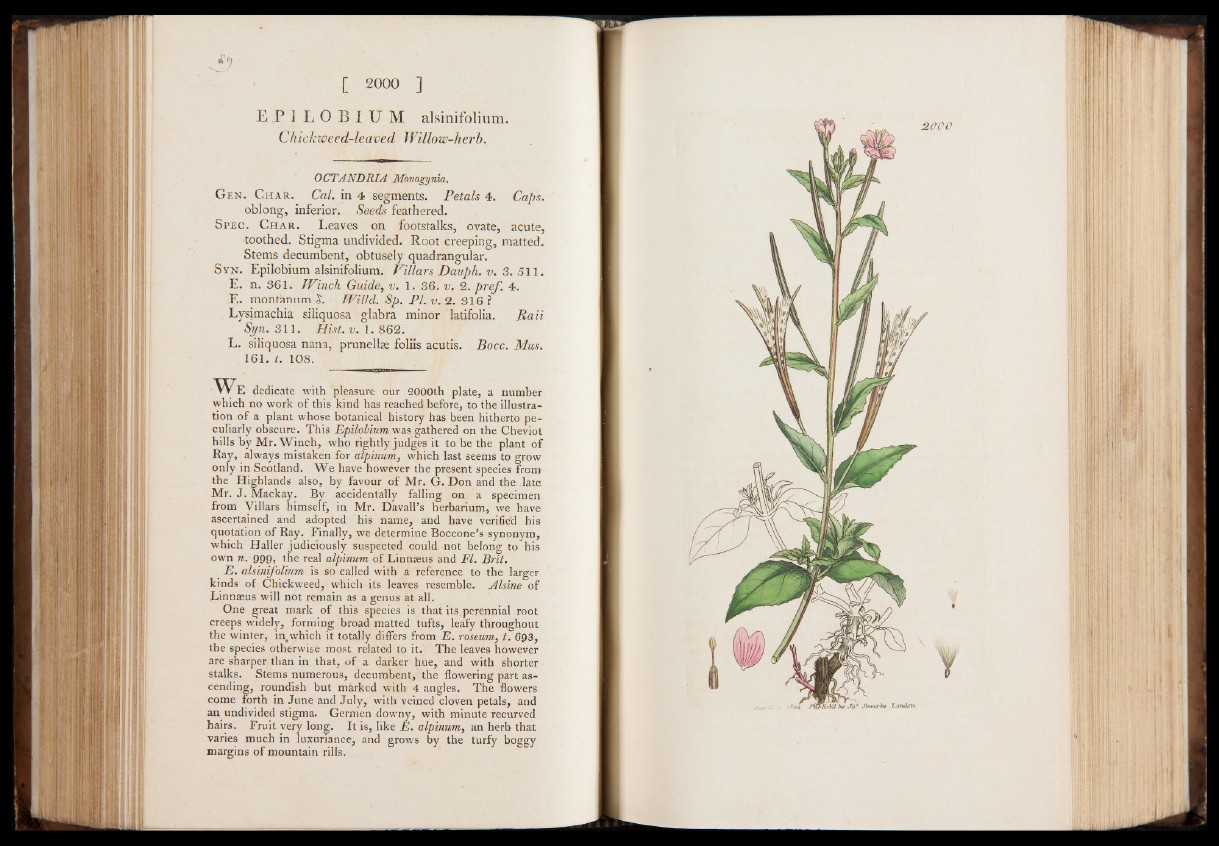
2000 ]
f*>
C
E P 1 L O B I U M alsinifolium.
duckweed-leaved Willow-herb.
OCTANDRIA Monogynia.
Gen. Char. Cal. in 4 segments. Petals 4. Caps.
oblong, inferior. Seeds feathered.
Spec. Char. Leaves on footstalks, ovate, acute,
toothed. Stigma undivided. Root creeping, matted.
Stems decumbent, obtusely quadrangular.
Syn. Epilobium alsinifolium. V illa rs Dauph. v. 3.511.
E. n. 361. Winch Guide, v. 1. 36. v. 2 . p re f. 4.
E. montanum §. W illd. Sp. P L v .2 . 316 ?
Lysimachia siliquosa glabra minor latifolia. R a ii
Syti. 311. H i s t .v . l . 862.
L. siliquosa nana, prunella; foliis acutis. Bocc. Mas.
161. t. 108.
W e dedicate with pleasure our 2000th plate, a number
which no work of this kind has reached before, to the illustration
of a plant whose botanical history has been hitherto peculiarly
obscure. This Epilobium was gathered on the Cheviot
hills by Mr. Winch, who rightly judges it to be the plant of
Ray, always mistaken for alpinum, which last seems to grow
only in Scotland. We have however the present species from
the Highlands also, by favour of Mr. G. Don and the late
Mr. J. Mackay. By accidentally falling on a specimen
from Villars himself, in Mr. Davall’s herbarium, we have
ascertained and adopted his name, and have verified his
quotation of Ray. Finally, we determine Boccone’s synonym,
which Haller judiciously suspected could not belong to his
own n. 999, the real alpinum of Linnaeus and FI. Brit.
E . alsinifolium is so called with a reference to the larger
kinds of Chickweed, which its leaves resemble. Alsine of
Linnseus will not remain as a genus at all.
One great mark of this species is that its perennial root
creeps widely, forming broad matted tufts, leafy throughout
the winter, in.which it totally differs from E . roseum, t. 693,
the species otherwise most related to it. The leaves however
are sharper than in that, of a darker hue, and with shorter
stalks. Stems numerous, decumbent, the flowering part ascending,
roundish but marked with 4 angles. The flowers
come forth in June and July, with veined cloven petals, and
an undivided stigma. Germen downy, with minute recurved
hairs. Fruit very long. It is, like E . alpinum, an herb that
varies much in luxuriance, and grows by the turfy boggy
margins of mountain rills.